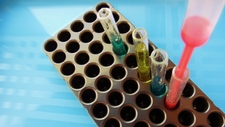Evidence-based Decision-making

TEKS Objective
The student is expected to in all fields of science, analyze, evaluate, and critique scientific explanations by using empirical evidence, logical reasoning, and experimental and observational testing, including examining all sides of scientific evidence of those scientific explanations, so as to encourage critical thinking by the student.
Essential Understanding
The student uses critical thinking and scientific problem solving to make informed decisions.
Science Background
Evidence-Based Decision-Making: ServeCenter (website) - Ideas to help educators apply evidence-based decision-making to their own efforts to improve student motivation and achievement.
Evidence-Based Decision-Making
ServeCenter, www.serve.org
Teaching Critical Thinking, Lessons from Cognitive Science: Tim van Gelder (PDF) - Unpublished journal article that discusses the role and importance of critical thinking in education.
Teaching Critical Thinking, Lessons from Cognitive Science
Tim van Gelder, frank.itlab.us
Signature Lesson
Introduction to Experimental Design: Learn NC (website) - Students learn and use experimental design vocabulary, and practice their critical thinking skills by reading an experiment description, analyzing the information provided, and answering questions about the experiment’s design.
Introduction to Experimental Design
Learn NC, www.learnnc.org
- Supporting Lessons
- Extensions
- Assessment Ideas
- Literature Connections
- Related
TEKS - Additional Resources
Supporting Lessons
The Case of the Missing Computer Chip: Indiana University (website) - Analyzing and evaluating clues and pieces of evidence, students attempt to resolve a simulated crime.
The Case of the Missing Computer Chip
Indiana University
Soak It Up: PBS (PDF) - Students use problem-solving strategies and reasoning to compare the price and qualities of three types of paper towel and then decide which one is the best value.
Elaboration Lessons and Extensions
Experimenting with pH: Learn NC (website) - Students practice their critical thinking skills in an inquiry-based experiment that explores the effects of volume and concentration on pH.
Assessment Ideas
Have student groups design fair tests to compare two or three brands of the same commercial product. Then have each student write a paper that uses evidence collected during the test to identify the best product among those considered.
Literature Connections
Building Thinking Skills. Parks, Sandra (ISBN-13: 978-1601441492)
Crime Scene Detective. Schulz, Karen (ISBN-13: 978-1593630638)
Temperature: Heating Up and Cooling Down. Stille, Darlene (ISBN-13: 978-1404803459)
Additional Resources
Critical Thinking and Reflection: Centre for Excellence in Teaching and Learning (website) - Resources to help teachers assess and develop students’ critical thinking and reflection skills.
Critical Thinking and Reflection
Centre for Excellence in Teaching and Learning, learnhigher.ac.uk
TEKS Navigation
Grade 5
Need Assistance?
If you need help or have a question please use the links below to help resolve your problem.

Comments